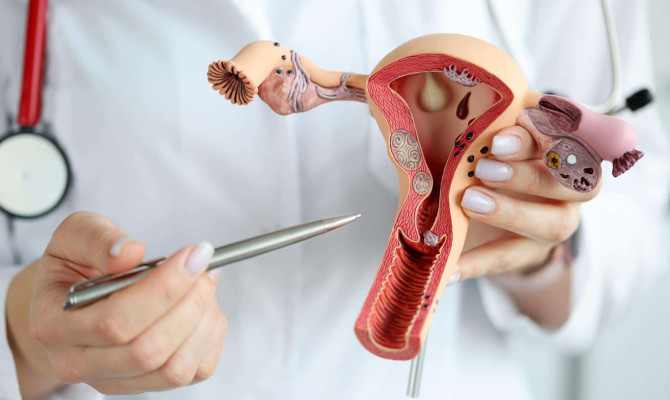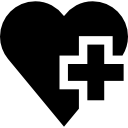Heart Disease : Types, Causes, and Management

- Heart Disease
- 22 Aug 2023
Overview
What is heart disease?
A disorder affecting the cardiovascular system. Cigarette smoking, high cholesterol levels, high blood pressure, a poor diet, insufficient physical activity, and obesity have all been linked to an increased risk of cardiovascular disease.
Coronary artery disease is the most frequent kind of heart disease and can result in heart attacks, chest discomfort, or stroke.
Congestive heart failure, irregular heartbeats, birth defects, and bacterial or viral endocarditis are all examples of other heart conditions.

Types
What are the types of heart disease?
Several distinct forms of cardiac disease have been identified. Congenital cardiac disease describes conditions that are present at birth. There are also sorts that emerge later in life. 4Types| Researched based study from medlineplus.gov
Coronary artery disease
- It is often called coronary heart disease.
- Plaque, a gummy substance, progressively builds up over time in the arteries that carry blood to the heart muscle, reducing blood flow and eventually causing heart failure.
- Plaque causes or contributes to various cardiac issues by reducing or preventing blood flow to the heart muscle.
Angina
- Angina is pain or discomfort in the chest caused by not getting enough oxygen-rich blood to the heart muscle.
- It might feel like your chest is being pressed or squeezed. The pain can also be in your arms, shoulders, neck, head, stomach, or back.
Heart attack
- This happens when cholesterol, fat, and other substances called plaque build up in the coronary arteries, which bring blood to the heart muscle. This makes the vessels narrow.
- When plaque in an artery of the heart breaks, it causes a blood clot to form around it. This blood clot can stop blood and oxygen from getting to the heart muscle through the artery. When a lack of blood and oxygen causes damage or death of some of the heart muscles, it causes a heart attack.4Types| Researched based study from medlineplus.gov
Heart failure
- When the heart muscle cannot supply blood as effectively as it should, this is called heart failure.4Types| Researched based study from medlineplus.gov
- Often, blood backs up, which causes fluid to collect in the legs and lungs. The increase in the fluid can make it hard to breathe and make the legs and feet swell up.
Arrhythmia
- “Arrhythmia” involves any trouble with a person’s heartbeat rate or rhythm. During an arrhythmia, the electrical signals in the heart may be too fast, too slow, or all over the place. This makes the heart beat in a strange way.4Types| Researched based study from medlineplus.gov
- When the heart doesn’t function right, it can’t move blood around the body as well as it should. When this occurs, the lungs, brain, and all other systems can’t work right and may shut down or suffer damage.
Symptoms
What are the symptoms of heart disease?
It’s possible for heart illness to remain “silent,” going undetected until symptoms such as a heart attack, heart failure, or arrhythmia become apparent. The occurrence of such events may be accompanied by:5Symptoms| Researched based study from Cdc.gov
- Pain or discomfort in the center of the chest, pain in the upper back or neck, indigestion, heartburn, nausea, vomiting, extreme exhaustion, discomfort in the upper body, dizziness, and shortness of breath are all symptoms of a heart attack.
- Heart palpitations are an arrhythmia symptom.
- Breathlessness, weariness, and swelling in the feet, ankles, legs, belly, and neck veins are all symptoms of heart failure.
Risk factors
Risk factors for developing cardiovascular disease
Numerous risk factors increase the probability of developing heart disease. Some of these things are under your control, while others are not.4Risk factors| Researched based study from medlineplus.gov
- Age: The chances of developing heart disease rise as you age.
- Gender: Women and men may react differently to specific risk factors for cardiovascular disorder.
- Genetics and family history: The chance of developing heart disease increases if it runs in your family. In addition, studies have connected some genes to an increased danger of developing cardiac problems.
- Race/ethnicity: There are some categories that are more likely to be affected.
- Modes of living: Unhealthy behaviors have been linked to an increased risk of cardiovascular disease over time
- Consuming a lot of salt, sugar, and processed grains in one’s diet.
- Undergoing insufficient physical effort.
- Excessive alcohol consumption.
- The effects of smoking and secondhand smoke.
- Overwhelming stress
Heart disease risk is increased by the presence of various medical problems:
- High blood pressure
- Elevated lipid levels.
- Diabetes.
- Obesity.
- Inflammatory and autoimmune disorders.
- Kidney failure4Risk factors| Researched based study from medlineplus.gov
Diagnosis
Diagnosis of heart disease
Blood testing for diagnosis
- When a muscle is destroyed, such as after a heart attack, the body releases compounds into the bloodstream to help the patient recover. The compounds can be measured by blood testing to determine if and to what extent the heart muscle has been injured. 2Diagnosis| Researched based study from ucsfhealth.org ,6Diagnosis| Researched based study from Mayoclinic.org
- The levels of blood lipids (such as cholesterol and triglycerides), vitamins, and minerals can all be determined with a blood test.
- An arm vein is used to collect the blood sample, which is sent to a lab for examination, and your doctor reviews the results with you.
ECG or electrocardiogram
- An electrocardiogram records your heart’s electrical activity. A healthy heart rate indicates good overall health.6Diagnosis| Researched based study from Mayoclinic.org
- Your chest, arms, and legs will be covered in tiny sticky spots and wire leads. After connecting the leads to the ECG equipment, the electrical impulses will be recorded and printed out.
- An electrocardiogram (ECG) can help your doctor detect cardiac arrhythmias and heart attacks.
The Stress Test by Exercise
- A type of electrocardiogram (ECG) performed during activity is known as a stress test, often known as a treadmill or exercise test.6Diagnosis| Researched based study from Mayoclinic.org
- Physical activity is an effective way to display the functioning of your heart to your medical examiner.
Heart ultrasonography (echocardiogram)
- A typical diagnostic tool is echocardiography. It uses ultrasound, a form of X-ray, to produce an image of your heart. A probe is placed on the chest or passed down the esophagus.
- The strength with which your heart pumps blood can be evaluated, and any issues with your heart’s valves and chambers can be detected.6Diagnosis| Researched based study from Mayoclinic.org
Nuclear stress testing of the heart
- A thallium scan, dual isotope treadmill, or workout nuclear scan are all names for this type of examination.6Diagnosis| Researched based study from Mayoclinic.org
- You will receive an intravenous injection of a radioactive “tracer.” It sends a surge of vitality straight to your chest. This energy is captured by external cameras and displayed on a screen.
- This image is used by your doctor to assess both the resting and active state of your heart’s ability to pump blood. Your doctor can also tell if there is damage to your heart muscle via this test.
Angiography of the heart
- After a heart attack or bout of angina, coronary angiography may be recommended.
- The process involves the insertion of a catheter into an artery present in either the groin, arm, or wrist. The catheter is advanced within the artery to the heart.
- An X-ray is taken after a specific dye is injected into the coronary arteries.
- The X-ray will reveal the exact locations and severity of any blockages in your coronary arteries. How well your heart is functioning is also reflected in this.
- Coronary angiograms are useful in assisting your doctor in making treatment decisions.
Magnetic resonance imaging (MRI)
- An MRI scan involves strong magnets and radio waves that create high-resolution digital pictures of your heart.
- It captures both static and moving pictures of your living heart. In order to better visualize the heart and coronary arteries, a specialized dye is sometimes employed.
Coronary computed tomography angiogram (CCTA)
- This computed tomography (CT) scan modality has the potential to aid in detecting coronary heart disease.6Diagnosis| Researched based study from Mayoclinic.org
- This examination is non-invasive and can determine the cause of atypical heart symptoms.
Treatment
Treatment of heart diseases
Several potential treatments will be thought about after test results are received. Medication, coronary angioplasty, and coronary artery bypass grafting (also known as CABG) are all potential treatments7Treatment| Researched based study from Nhs.uk
The therapeutic goals include symptomatic relief and decreased risk of a heart attack.
Medications
Common pharmaceutical classes for treating coronary heart disease are:
- Beta-blockers are medicines that lower blood pressure and heart rate, making the heart’s job easier.
- The coronary arteries are made more permeable by nitrates, which are drugs that enlarge them.
- Calcium antagonists and calcium channel blockers treat heart and blood vessel conditions by reducing calcium influx. The blood vessels relax and expand as a result of this, easing the strain on the heart and leading to reduced blood pressure.
- Inhibitors of the enzyme angiotensin-converting enzyme (ACE) and blockers of the angiotensin II receptor (ARBs) reduce the workload placed on the heart by lowering blood pressure in the arterial system. They may also halt the progress of coronary heart disease.
- The risk of cardiovascular disease and stroke can be reduced by taking an antiplatelet medication like aspirin or clopidogrel (unless there is a medical reason not to).
- Statins are medications used to reduce blood cholesterol levels, which in turn decreases the risk of heart attack by decreasing the amount of plaque in the arteries. The statins atorvastatin and simvastatin are widely used.7Treatment| Researched based study from Nhs.uk
Surgeries
Stenting and Angioplasty of the Coronary Arteries
- Percutaneous coronary revascularization, or coronary angioplasty, is a minimally invasive procedure for treating constricted coronary arteries. The technique is performed in a manner analogous to angiography, in which a balloon-tipped catheter is inserted into a constricted coronary artery.7Treatment| Researched based study from Nhs.uk
- The insertion of a stent is a standard part of most angioplasties. In order to maintain the coronary artery open after angioplasty, a stent is embedded into the artery.
- The stent is placed over the balloon on the catheter, and the balloon is inflated to enlarge the narrowed region.
- After the stent has been expanded, the balloon can be deflated and withdrawn.
Coronary artery bypass grafting (CABG)
- To restore blood flow beyond the location of the constricted artery, CABG uses a blood vessel obtained from somewhere else in the body.7Treatment| Researched based study from Nhs.uk
- This is accomplished by connecting one end of the graft to the coronary artery below the narrowing or blockage and the other end to the aorta, thereby “bypassing” the obstruction.
- Graft vessels can be harvested from the heart, the forearm, or the legs.
- Participation in cardiac rehabilitation after surgery may be suggested to speed up the healing process.
Prevention

Prevention of heart diseases
Dietary changes
- In order to avoid heart disease and its complications, it is important to eat healthily. Be sure to have a diet rich in fresh produce and low in processed items. 1Prevention| Researched based study from Nhs.uk
- Consuming a diet heavy in saturated fat and trans fat may raise the risk of cardiovascular disease.
- High cholesterol can be avoided by eating foods that have high fiber and low saturated fat, cholesterol, and trans fats.1
- Sodium restriction is another strategy for controlling blood pressure. 1Prevention| Researched based study from Nhs.uk
- Reducing the quantity of sugar in your food may help you avoid or better control your diabetes.
- Avoid consuming too much alcohol, which is known to increase blood pressure. Men as well as women should restrict their alcohol intake to not more than two drinks each day.
Weight control
- Those who are overweight or obese have a higher risk of developing cardiovascular disease.
- Keeping up a regular exercise routine can aid in weight management and the control of hypertension, cholesterol, and glucose levels.
- It is suggested that individuals engage in at least 2.30 hours per week of moderately intense physical activity like brisk walking or cycling.
- Every day, kids and teens should exercise for at least an hour.
Avoid smoking
- Heart disease is one of the many health problems that smokers face. 3Prevention| Researched based study from Cdc.gov
- Quitting smoking can greatly reduce the danger of developing cardiac problems.
- You can get advice on how to quit from your doctor.
Regular blood check-ups
- At least once every 4 to 6 years, you should have your healthcare provider check the cholesterol levels in your blood.
- Checking your cholesterol levels more frequently may be recommended if you have a history of high cholesterol or if you have a family history of the condition.
- Medications and changes in lifestyle can help lower the risk of heart disease in those who suffer from high cholesterol. 3Prevention| Researched based study from Cdc.gov
Regular blood pressure checks
- Check your blood pressure often since high blood pressure usually has no warning symptoms.
- If you have never had issues with high blood pressure or other related cardiac risk factors, your healthcare team should assess your blood pressure at least once every 2 years.
- Your blood pressure will be checked more frequently by your medical team if you have been diagnosed with high blood pressure.
Monitor your glucose levels
- Carefully tracking blood sugar levels is important for those having diabetes.
- Discuss potential courses of treatment with your healthcare providers.
- To help you maintain healthy blood sugar levels, your doctor may suggest making some adjustments to your daily routine taking these measures will help lower your danger of developing heart disease. 3Prevention| Researched based study from Cdc.gov
Stay on track with your medications
- Take your prescribed medication for high cholesterol, hypertension, or diabetes exactly as prescribed.
- If you don’t comprehend something, you should always ask questions. Share your issues with your medical examiner, nurse, or pharmacist before you stop consuming any medication.
History of heart disease
- If you’ve already had a heart attack, your medical staff will do what they can to keep you from experiencing another one.
- A combination of medication, surgery, and behavioral modifications may be recommended.
- Take your medication exactly as prescribed by your doctor.
Takeaway
Takeaway
Many people suffer from heart disease. Heart disease manifests itself in different forms. Some are unavoidable due to genetic predisposition.
However, heart disease and its effects are often avoidable with the right measures taken.
Some of these measures include maintaining a balanced diet, exercising regularly, and seeking medical attention at the first sign of heart problems.
Any feedback on this article?
 This Articles content was accurate
This Articles content was accurate Very Informative Article
Very Informative Article I have a question or a comment
I have a question or a comment
 This article contains inaccurate content
This article contains inaccurate content This article was not helpful
This article was not helpful I have a question or a comment
I have a question or a comment
We appreciate your helpful feedback!
Checkout our social pages
References
-
National Health Service
Coronary heart disease | Prevention
-
UCSF Health
Diagnosing Heart Disease | Diagnosis
-
Centers for Disease Control and Prevention
Heart Disease | Prevention
-
Medline Plus
Heart Diseases | Types | Risk factors
-
Centers for Disease Control and Prevention
About Heart Disease | Symptoms
-
Mayoclinic
Heart disease | Diagnosis
-
National Health Service
Coronary heart disease | Treatment




































